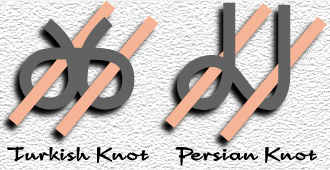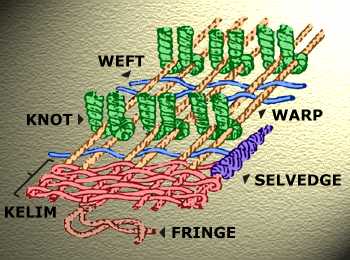KNOTTED

There are two major kinds of knots found in oriental rugs. One is the Turkish
knot or Ghiordes knot, and the other is the Persian knot or Senneh knot. A
third, less used and less desired knot is the Jufti knot. This knot is
considered inferior, as half the number of knots are used, therefore the rug is
produced in half the amount of time using half the amount of wool.

It is important to understand how to count knots correctly. Knots per square
inch is a term frequently used, often as a guage of a rug's quality. The number
of knots per square inch determines the density of weave and intensifies the
definition of the design. In very fine woven rugs the design is as clear on the
back as on the front. Finely woven rugs are generally speaking more expensive.
Counting knots on an oriental rug is easy to learn. On the back of a handknotted
rug you will see thousands of tiny squarish "bumps". These are the
visible part of the knots that loop around the warp threads.
The map below demonstrates the type of knot used by each region:


